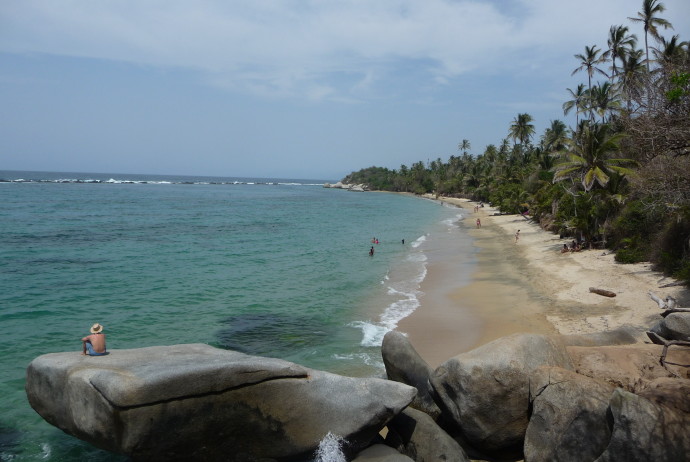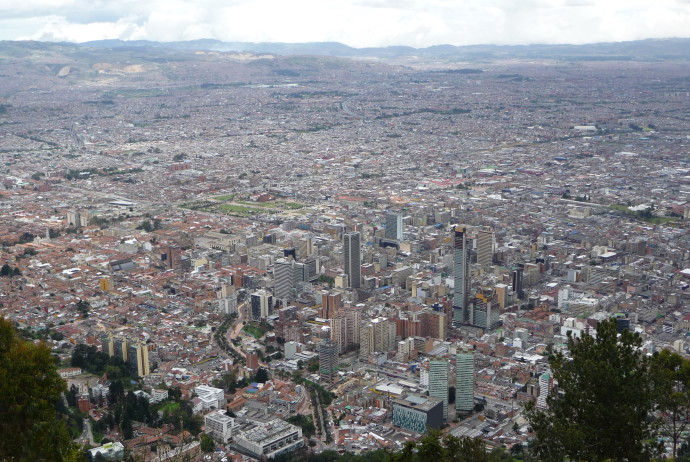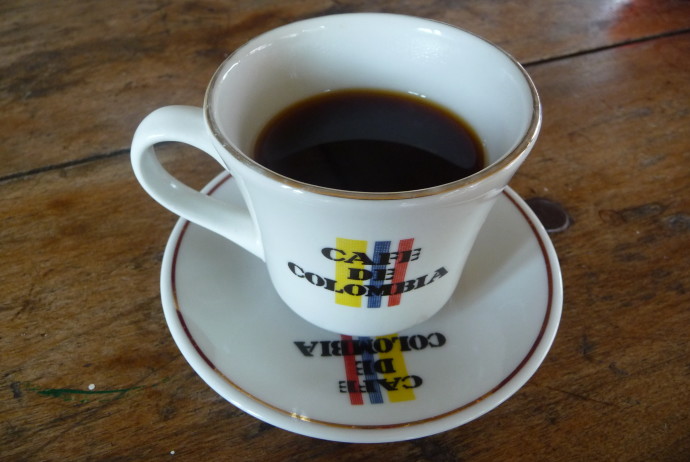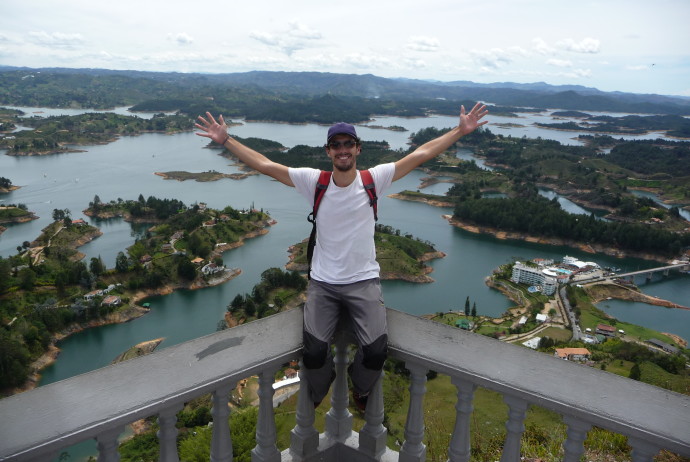We had left our big backpacks which had accompanied us loyally during the last 5 months, in Bogota. Thus, we boarded our plane to Cartagena de Indias, the ‘white’ city all backpackers go into rhapsodies about, only with hand luggage. Right at the airport we reunited with some friends that we had first met in Montañita and went on to look for a hostel in Getsemani, the city area where most backpackers stay, together. For the next couple of days we then explored the beautiful colonial style old town of Cartagena, walked on the city walls of the 11km long fortress once built to defend the city back in the day, cooled off by catching the waves at Bocagrande, the city’s best beach close by and spent our evenings sipping beers at the square close to the famous clock tower gate or munched ice cream (which was necessary, obviously because it was very hot still at night) while enjoying the atmosphere at a square we found where everybody can present his talent, be it singing, dancing or some kind of acting, to an attentive audience of locals and travelers mingled together. We sadly forgot to remember the name of the place, but if you walk around Getsemani at night, you will surely run into it.
Our next stop then was Playa Blanca. Located just an hour’s drive outside the city (and accessible by boat, taxi or bus), this beach fulfills all criteria of a tropical paradise beach: white sand, turquoise water, palm trees, cocktails served in pineapples or coconuts and little huts to sleep in right on the beach. While there, we floundered about in the calm and bathtub warm water, went for strolls on the beach until we found our own little private strip where we watched the splendid sunset before walking back to eat some fresh Mojarra for dinner (this is a delicious local fish, however, you got to be sure to tell the server you want it grilled, otherwise they will just fry that fish to tastelessness). Many people just come here for a day trip, however, we wanted to spend the night, and thus, could choose between sleeping in hammocks or rooms, both of course so close to the sea that you could not only see but also hear it. As there are quite some mosquitoes around we opted for rooms, but as it stayed hot and humid during the night, we ended up taking a dip in the ocean in the middle of the night, trying to cool down. However, the water was not much cooler than the outside temperature and therefore, did not help all together that much to cool us off, but nevertheless, it still felt great. Before returning to Cartagena, we enjoyed another day at the beach, bringing our relaxation level up to at least 200%, possibly even higher.
From Cartagena we took a transfer bus to go to Santa Marta. Santa Marta itself is not a very exciting city: Apart from hanging out at the Parque de los Novios in the evenings, which however is really nice, there is not much the city itself has to offer. BUT, close by awaits National Park Tayrona, and that is a real highlight of the Colombian Coast. We hiked through tropical rainforest and along perfect beaches until we reached our campsite for the night. There we slept in hammocks and were quite surprised when we woke up with only a few mosquito bites – everyone we had talked to before going there had told us horror stories of how we would basically be eaten alive there by these little bastards. However, as we continued living with an only minor blood loss, and that quite happily, we had some breakfast at the jungle bakery. This place did not look like a bakery in the first place, and definitely not like a trustworthy one, however, it served amazing chocolate bread which was so good, that we could not even have dreamed of any better. So we were even happier after that and went on to enjoy a fun day at the beaches around the area, playing in the water, swimming and relaxing at the shore.
Back in Santa Marta we went on to do some more excursions the rest of the days at the coast. One day we went snorkeling at Playa Grande, a bay close to the small and quite charming fishing town of Taganga, just 15 bus minutes outside of Santa Marta. Lots of people get scuba certified here, not only because there is quite a lot to see but also because the diving schools here offer great deals. On our last day we went to check out the beach at Bahia Concha, which turned out to be nice but a bit boring after a while, so we went back to town where we found the probably best ceviche (remember, that is the raw fish dish we have told you about a few times already) place in town, munched lots and lots of ice cream and hung out one last time in the Parque de los Novios, drinking some wine. The next morning it was time to say goodbye to Colombia for Patrick and Nicky as they were headed towards the last big adventure of this South America trip: Venezuela. However, it was also time to say goodbye to each other, as Lisa was staying in Taganga for a few days longer to take the chance to get her diving certification before going home to Europe.
When at the Caribbean Coast of Colombia
What to do: Don’t stay in the cities! Make excursions to see the beaches outside of the cities like Playa Blanca or the ones in Parque National Tayrona – they are the ones everyone is talking about when marveling about the perfect Caribbean beaches in Columbia!
Where to sleep: Hostal Casa Candela y Chocolate in Santa Marta is a great choice. Clean and bedbugs free beds plus friendly staff, what else can you wish for?
What to eat & drink: Try the fresh Mojarra (with which you were probably still swimming with during the day) at one of the beach restaurants in Playa Blanca – sooooo good!!



